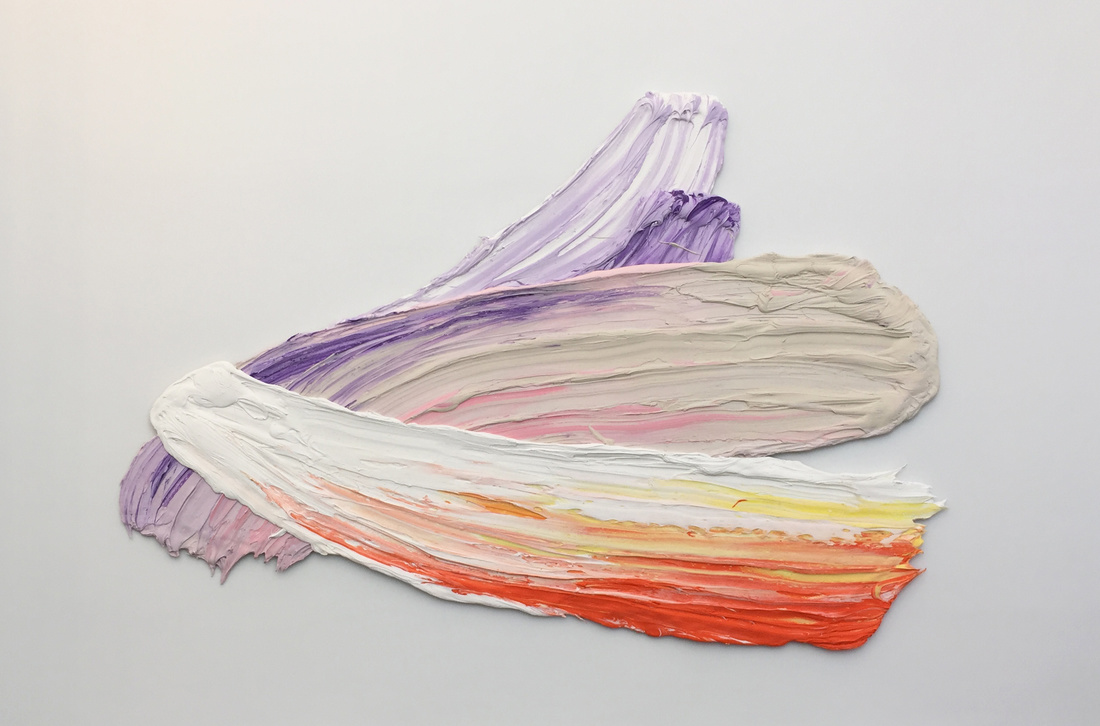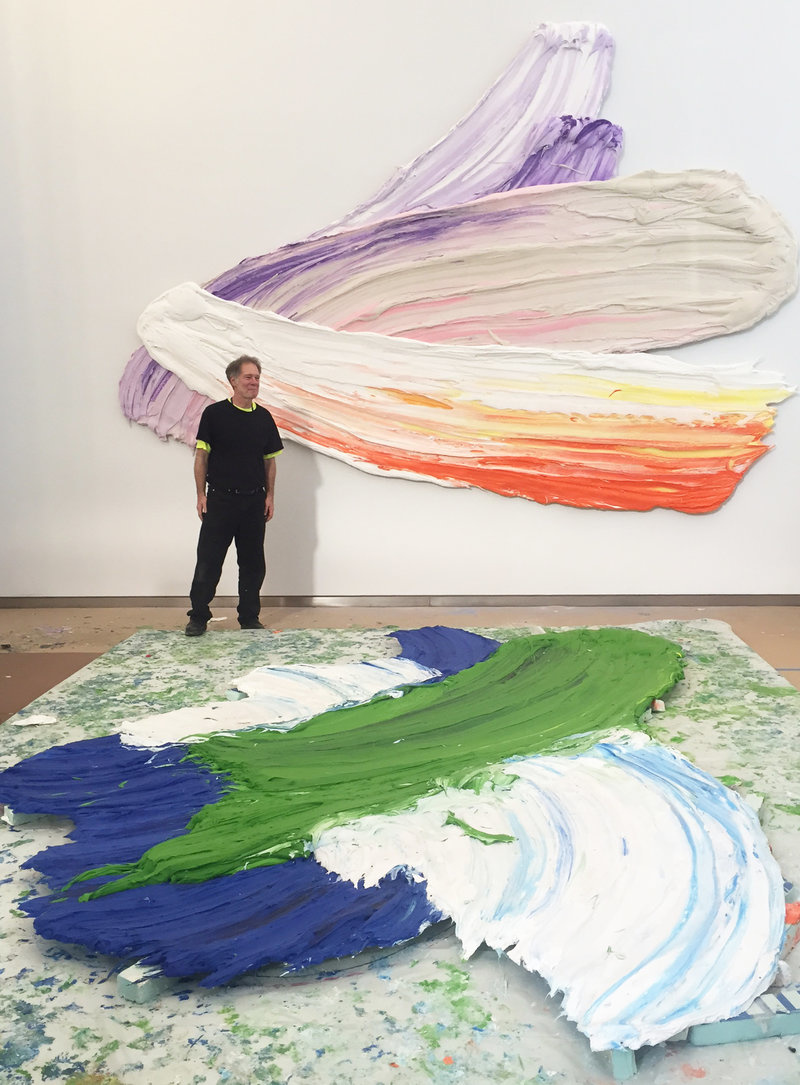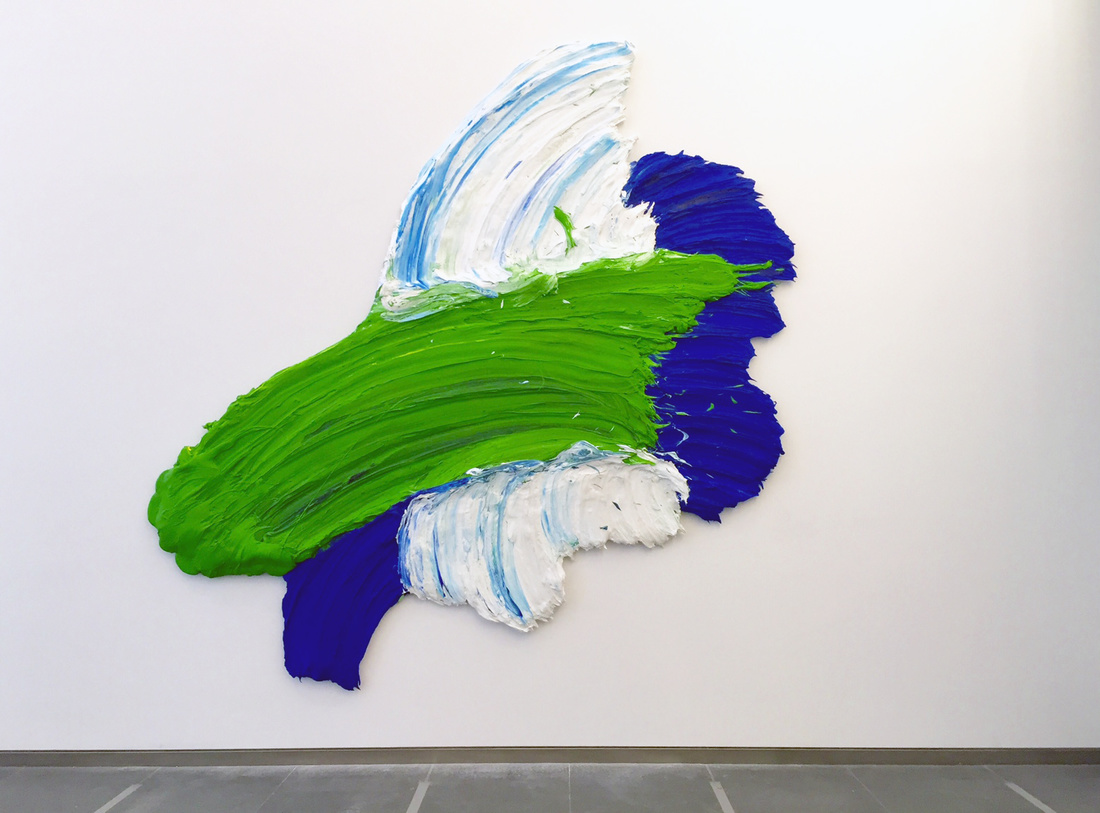"I noticed Donald Martiny’s work in 2013 at an art fair in Miami with Kathryn Markel Gallery. I was immediately drawn to it and was very curious about his process. Since that time his career has become very active, including landing a solo exhibition at Fort Wayne Museum of Art, an installation of his work at the new World Trade Center, upcoming exhibits in Germany, the United Kingdom and another solo museum exhibition in Michigan, at Alden B. Dow Museum of Art and Science in September, for which he was preparing 15 works for before this interview." Read the rest of Donald's interview with Brenda Hope Zappitell by clicking here.
Brush Strokes are Human, Personal and Intimate
Donald Martiny at work in the 1WTC lobby.
Emily Jaeger, Features Editor:
Could you talk a little about your interest in the painter’s gesture, this impactful exaggeration of the actual brushstroke? What was your impetus to begin exploring it in your work?
Donald Martiny:
First let me make clear that these works are actual brushstrokes. Many people mistake them for sculptures or molds. They are not forms that have been painted, they are pure paint through and through that I make with large brushes or directly with my hands. Brushstrokes are human, personal, and intimate. When I look at a painting by Ingres or Frederick Leighton the artist isn’t obviously present. When I look at Rembrandt I feel him there, I can connect with him. I want to be present in my work. Read the rest of the article on the Woven Tale Press website.
Donald Martiny discusses his work at Fort Wayne Museum of Art
Kayeli, 2016
41 x 29 inches, polymer and pigment mounted on aluminum
Donald Martiny's new book "Monumental Gestures" is now available
Donald's new book DONALD MARTINY: Monumental Gestures is available from the Ackland Museum Store and contains essays by Carter Ratcliff, Art Critic, Writer & Poet; Charles A. Shepard III, Executive Director of the Fort Wayne Museum of Art; Deborah Swallow, Marit Rausing Director of the Courtauld; Lawrence J. Wheeler, Director of the North Carolina Museum of Art. Or you can download it by clicking here.
Installation at One World Trade Center
In 2015 Martiny was commissioned for installation works at One World Trade Center. As the works were to be too large to fit through the doors, he actually painted them on site, moving his “studio” for two months into the lobby of the building: “Up to this point no one had ever seen me paint, I always paint alone. The Trade Center gets 25,000 visitors every day. That took a bit of getting used to.”
“I paint on the floor, and using a wide brush with a short handle, apply a mixture of polymer and pigment. Never is my hand more than a few inches from the painting. Sometimes I prefer to use my hands instead of brush because I like the direct contact with the paint."
“I prefer the paint to have the consistency of Vaseline or creamy peanut butter, as I work from all sides, to create a set of brushstrokes that address the viewer in their own space and at their own scale.” Woven Tale Press
We are loving this image of Donald!
Review: Giant sculptures reveal the secret beauty of paint
There is something quite seductive about paint. It’s not only what can be created with it but the medium itself that is so alluring. The vibrant hues swirled together, the unique texture of smears and splatters are entrancing, making a messy paint palette as visually interesting as the artist’s work on the canvas. North Carolina-based artist Donald Martiny knows this very well, which is why his unique sculptures pay homage to paint. Read the entire article by Katy French for Visual News by clicking here.
Artsy: One World Trade Center’s Lobby Gets Two Massive Brushstrokes
Read the review by Anna Furman for Artsy by clicking here.
Gestures at Madison Gallery

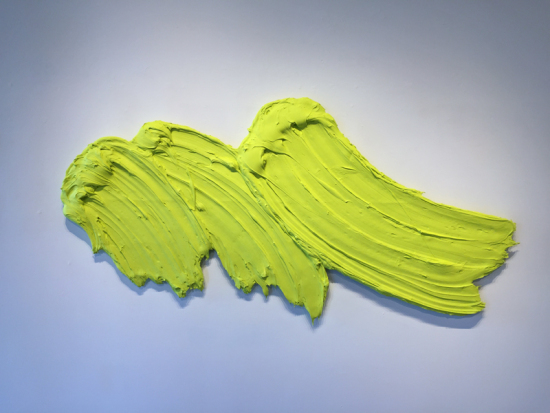
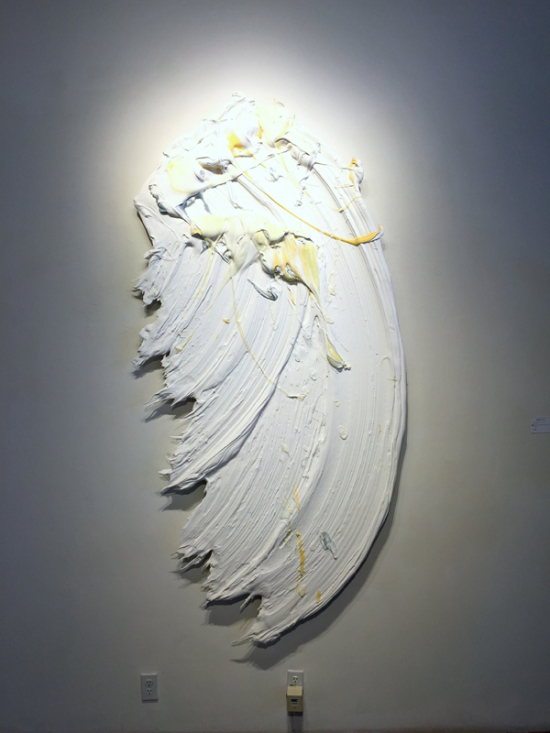
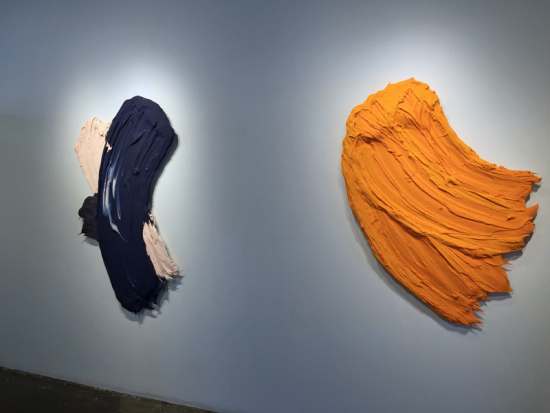
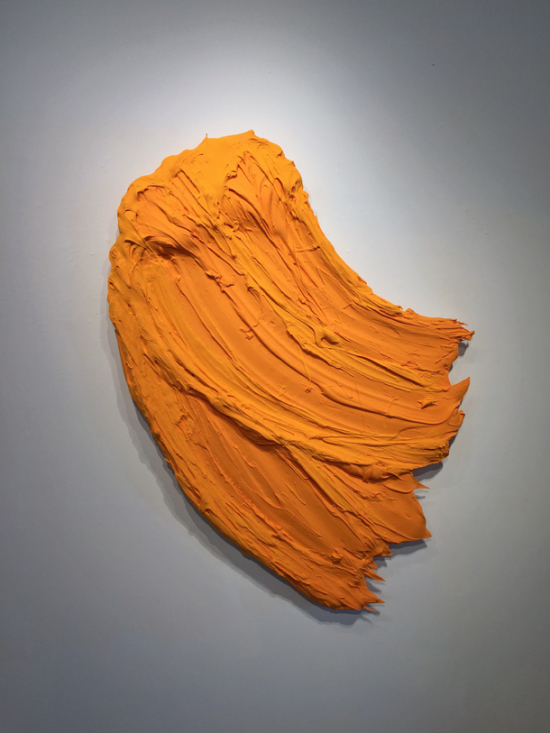
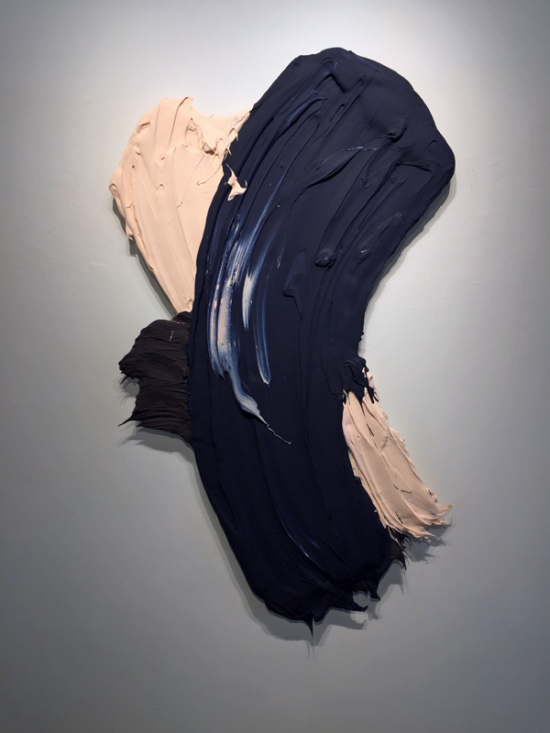
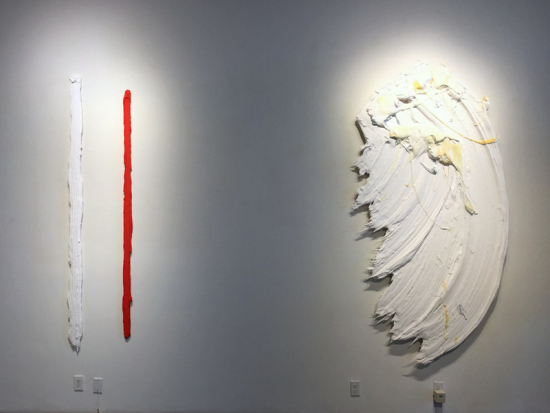
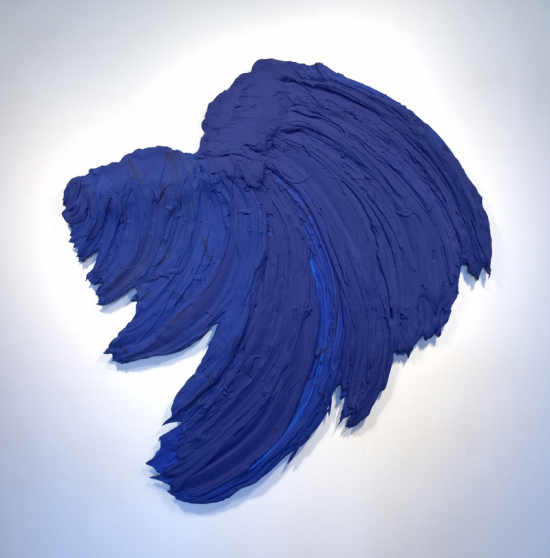
In a world that is more and more removed and isolated, where finding contact and gesture and movement, both abstract and emotional, is increasingly difficult, Donald Martiny's expressively lyrical solo, Gestures, at Madison Gallery in La Jolla, California is refreshingly immediate.
One is instantly struck by the work's visceral movement and vibrant color. But it would be too easy to reduce these forms to simply a discussion of color and flow. These enlarged brushlike strokes, formed from polymer and saturated pigment, are visual poems. They are the painterly equivalent of a verbal haiku, deceptively lean, but on reflection as complex as breath. The simplified structure allows the viewer to look deeper. The swaths of undulating paint, dotted with streaks of hidden color and seemingly random trace gesture, draw us closer, enticing us with their history. And the sensual , almost liquid quality of the forms woos us, like the touch of someones hand on bare skin, light but electric, the movement fleeting but the sensation enduring. The touch simple in form but resonant in understanding. That sensation is rare in this world of detachment. But as these paintings attest, and as has been said many times, "the simplest gesture is the most profound." It is indeed.







